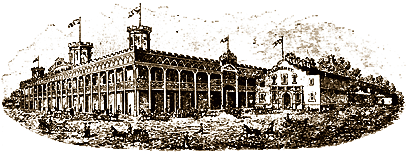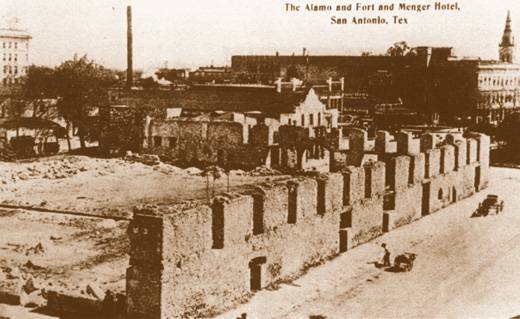Subject: Alamo Movies & Brackettville
Date: 08/22/98
From: Mike Boldtmichaelalamo@eudoramail.com
This is about the best site on the Alamo there is. I hope you keep updating and adding new departments. It's nice to know that there is a web site with all the latest information about the Battle of the Alamo. On a personal note I would like to see more on the films , and maybe some updates on the Brackettville sale.
And to my old friend Kevin Young, keep up the good work. I haven't spoken to you in a while but it's good to see your alive and kickin in Texas.
Mike Boldt
Thanks for your comments.I earlier toyed with the idea of including a section called "The Alamo in Popular Culture," that would, among other things, deal with the movies and television. However, keeping up with the Alamo's early history is a daunting task at best. Our priorities right now are to enlarge the section on the 1836 battle and to develop the site further for use by teachers.
I personally don't know what's going on at Brackettville, but I know there are those in our midst that do.I'll see what I can find out and get back to you.
Randell Tarín
Subject: Santa Anna's Bodyguards
Date: September 9, 1998
From: Jeff Pendleton
Did Santa Anna have regular bodyguards or an entourage, a few men specially trained or highly trusted to protect him?
Jeff Pendleton
This is the only reference to his personal escort, although we can assume that he used mounted troops as an escort for most of the campaign. The selection of camp guards, even for his personal tent area, would depend on whatever regiment or battalion was on guard detail on a particular evening.
During the Mexican War, Santa Anna did have a personally raised escort: the Guard of the Supreme, who also served as combat troops.
Subject: Isaac Millsaps
Date: 10/13/98
From: Dina Milsaps DeMeritt demeritt@worldnet.att.net
My great, great, great Grand-Father Isaac Millsaps fought in the Alamo. I would like to find out more information about him. Can anyone help me? Any kind of information would be wonderful.
Thank You
Dina Milsaps DeMeritt
DeWitt Colonist Isaac Millsaps was a member of the heroic Gonzales Relief Force who were the only Texians to timely respond to the appeal from Alamo Commander Travis and his men for aid to the besieged Alamo. The force fought their way into the fortress through surrounding Mexican centralist lines and, except for the exit of a few last minute couriers, died there with members of the garrison.
You will find his biography on Texian Web site, Sons of DeWitt Colony Texas with links to stories of his close associates, the story of how blind wife Mary and children were almost forgotten in the evacuation of Gonzales, and the sad story of how blind widow Mary lost her inheritance due to inability to pay taxes. A touching last letter signed by Isaac while in the Alamo fortress isgenerally thought to be a fake (see Millsap's Letterand links).
Wallace E. McKeehan, Consulting Editor
Alamo de Parras
Subject: Long Barrack's Arcade
From: Ron D'AmbrosiDeguell0@aol.com
Date: 10/21/98
Were the two-story Long Barracks arcaded with walkways during the 1836 battle or were they just plainly rectangular as drawn in Walter Lord's A Time To Stand and Tim and Terry Todish's Alamo Sourcebook 1836?
Also, were the adobe Long Barrack walls arched? In Adina de Zavala's History and Legends of the Alamo and Other Missions in and around San Antonioand John Man's & Tim Newark's Battlefields: Then & Now have the Long Barracks's adobe walls arched. Also Ray Sorrels' The Alamo in American History, a diorama of the Long Barracks has adobe arches/arcades. Is this historically accurate?
Ron D'Ambrosi
Brooklyn, New York

The arcaded walkway did not appear until Hugo Grenet, a French-born San Antonio merchant, took over the buildings by 1877 and converted them into a mercantile store. It was he that erected the two-story wooden arcades with the walkways. These additions were not well thought of by the general public who considered them to be hideous alterations.
